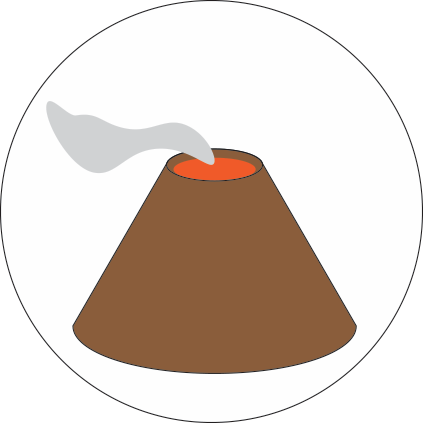

This is an educational website designed to help students learn about the processes of lava flow eruptions and their impact on the environment through the use of inquiry-based techniques. The site uses the 1783 eruption of the Laki fissure in Iceland as a type example of a large historical lava flow eruption that had a significant impact on the local human population and the global environment. The eruption led to unusual weather patterns around the world and led to the discovery by Benjamin Franklin of volcanic eruption impacts on the global climate.
Lava flow eruptions are the most common type of volcanic activity on Earth but surprisingly most of them occur underwater out of our view. In the exercises that follow you and your fellow students will play the role of a team of volcanologists who are trying to understand the impact of lava flow eruptions in the areas around active volcanoes and the broader impacts of this type of activity on the global environment. You will observe different types of lava flow eruptions and carry out simulations to understand the factors that control their behavior. In addition you will take virtual fieldtrips to Hawaii and Iceland to carry out observations and measurements to help you form your own hypotheses about the impact of the great 1783 eruption of the Laki fissure.
The exercises will use the following sequence for the exploration of lava flow eruptions:
1. Learn about the formation and properties of magma, and simulate different types of eruptions
2. View examples of lava flow eruptions and their impact on the surrounding environment
3. Explore volcanoes in Hawaii and Iceland using virtual fieldtrips, and collect field data
4. Construct hypotheses about how the Laki eruption affected the local and global environment
Design and Production: Steven Carey and Haraldur Sigurdsson
Original Flash Animations: Hiu Lam and Liz McCabe
Educational Consultant: Bette LaSere Erickson
Evaluation: Kathy Guglielmi
HTML5 Compliance and Site Maintenance: Katie Kelley
Animation Conversions: Brian Savage
Roy Bergstrom and the URI Students Technology Assistants Program provided valuable assistance during the development of this project. We thank Google for allowing Google Earth to be used as part of this exercise, and the US Geological SUrvey for use of imagery throughout the exercise. Darrel McIntire designed the field notebook. Karen Manning provided valuable critiques and testing of the exercise and field notebook.
This project was supported by a grant from the National Science Foundation's Division of Undergraduate Education.